In ancient Greece, Hestia was the goddess of the hearth and in that role, she presided over the flames that burned at the centre of every home, village and city. Hers was the quietest temple, one without the usual fanfare, statues or grand altars associated with her better-established brothers and sisters. The flame itself and the food cooked within it were the offerings to Hestia—nothing more was needed. The fire was tended to constantly and it was never allowed to die. To lose the fire was to lose the family, the city and the sense of stability that kept everyday life moving forward.
By the time of the Roman Empire, the story had remained much the same: Vesta (Hestia’s Roman counterpart) kept her flame burning in the very heart of the realm. Her flame was guarded by the Vestals—a group of hand-picked virgin priestesses whose sacred duty was to ensure it never went out (insert eye-roll here). The fire was both practical and spiritual. Its light symbolised continuity, survival, and communion.
In both Greece and Rome, the fire was never just about the flame. The hearth warmed, lit, fed and comforted. It was a place of shelter and security. Around it, people drew close, stories were told, food was shared and lives were bound together. More than the building it was within, the fire was the home.
For centuries, this practice continued. Even as recently as the 90s, fire was at the core of many homes. I distinctly remember sitting on the floor in front of our fire as a child, tea in hand (milk two sugars), hair drying after a bath. Yet, somewhere along the way, as design began to chase control and precision and I weaned my sugar addiction, the flames were extinguished, and the fires went out.
Until now.
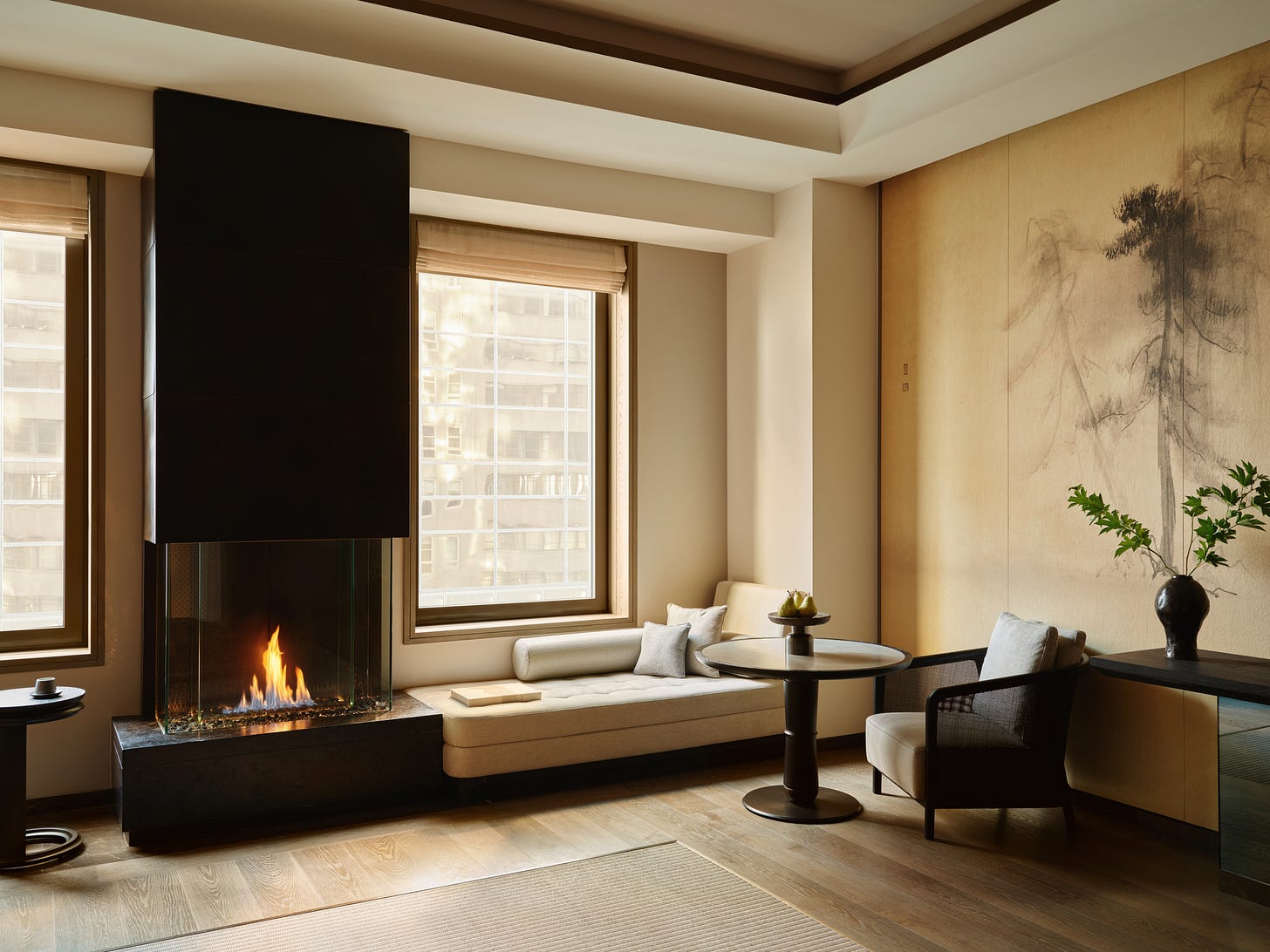
Fire and fireplaces are returning—not so much as decorative features but as experiences. That ever-important word that keeps popping up in hospitality design. Round the world, designers, hoteliers and chefs are placing fire back at the centre of their spaces, encouraging guests to gather and bring back to what it means to feel welcome.
Fire is elemental, unpredictable, and alive. Its return to our hospitality spaces feels, to me, more than anything, like a reaction to something that modern design has been missing: imperfection. Even in the luxury market, guests are rejecting spaces that are too polished and too predictable and fire, as natural an element as we can get, reintroduces the coveted authenticity.
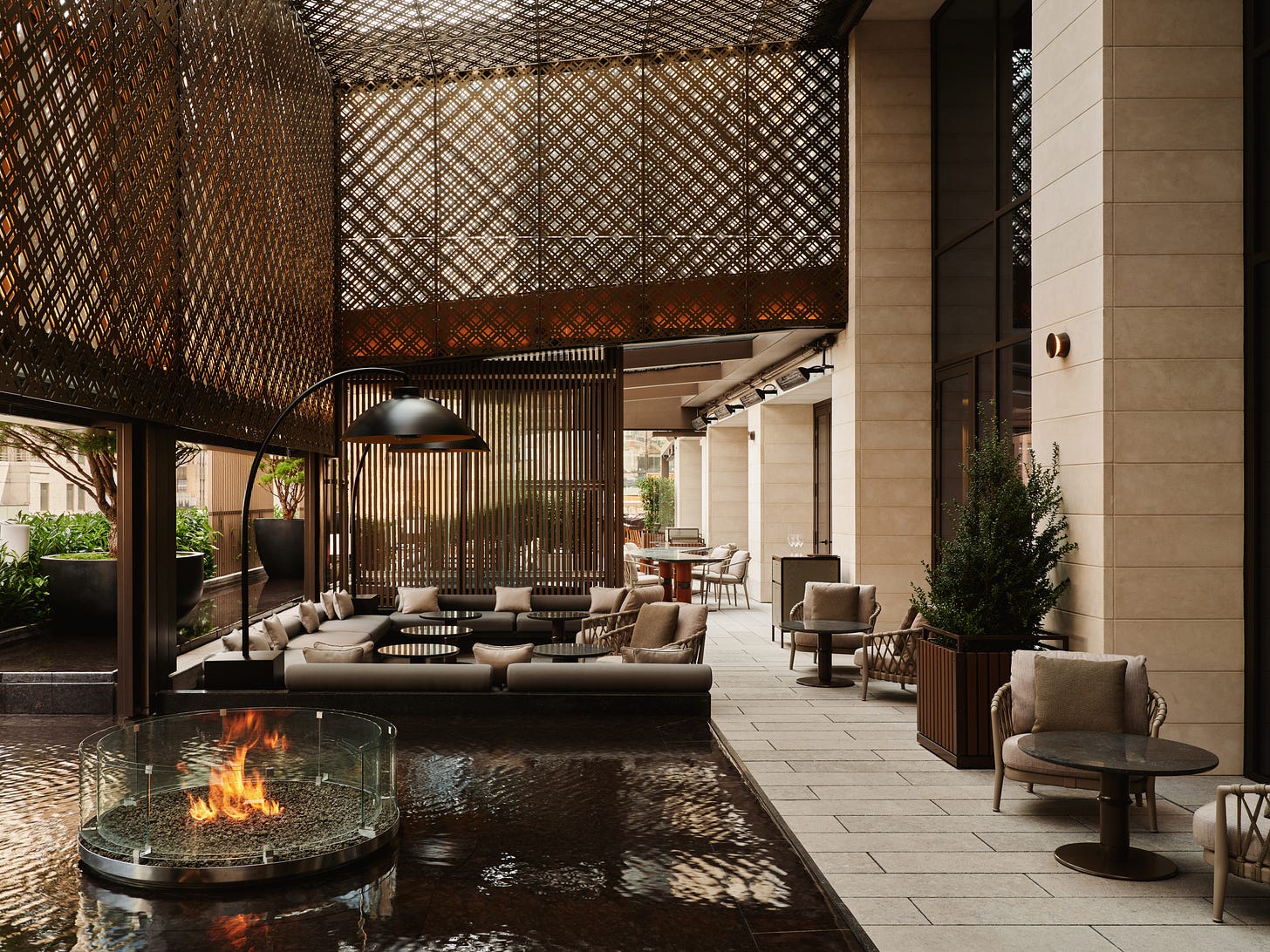
One of the first and finest examples I’ve come across is the Aman in New York. Designed by Jean-Michel Gathy and opened in summer 2022. See, back in 2014, New York imposed a ban on fireplaces in new constructions—a crackdown on hazardous wood burning mostly. So the city, ever the global pinnacle of modernity, turned its back on the flames and its fireplaces. Once an essential element of its classic brownstones and townhouses, they were all but erased thanks to regulation, modernisation and, in all honestly, probably a collective desire for convenience. Lugging wood up three flights of stairs is no one's idea of a good time. In the five boroughs, fires became few and far between and fireplaces evolved to become nooks that held pillar candles, bowls of pebbles and other miscellaneous nick-nacks.
Aman New York, however, is a hotel that is quite literally full of fires. There are fires in walls and fires in water. Every lobby and lounge glows with their warmth. Every single suite in the hotel has its own fire. There’s even one in the Spa. The flames are calm—steady even—controlled but not sanitised in the way gas fires can often be. The effect is profound. Whereas other hotels look towards art or beautiful vistas to define their public spaces (the Aman has both in spades), they choose to use fire to orient the room around something with a distinct sense of life. The interiors are soft, quiet, and tactile but the fire transforms them with a focal point that is captivating and constantly changing.
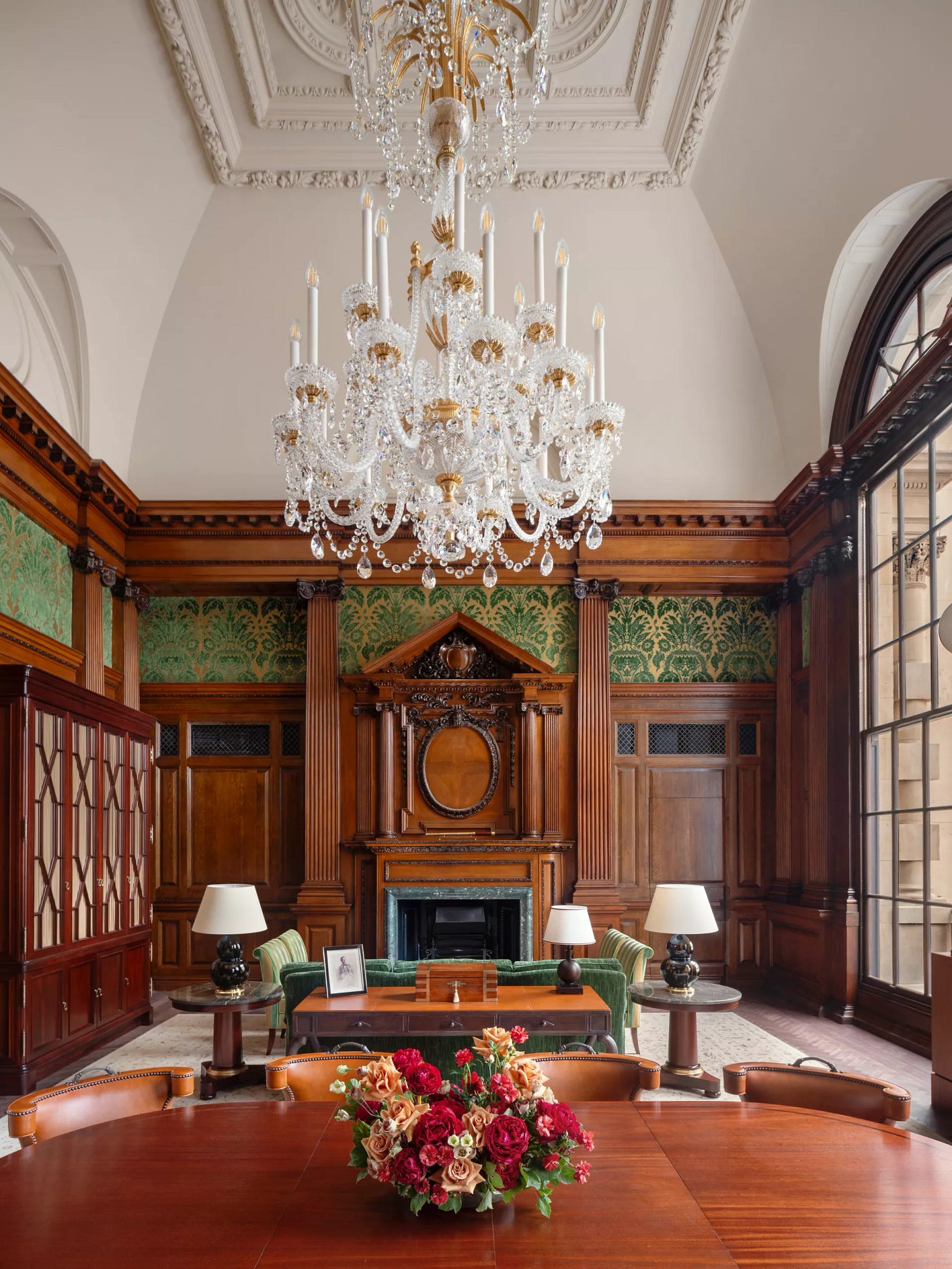
More recently, the same idea has been applied to Raffles London at The OWO. It opened towards the end of last year and was designed by architect Geoff Hull and the team at EPR Architects, with the hotel interiors tackled by The Office of Thierry Despont. Here, there is a different version of a similar story: fireplaces haven't been introduced—they’ve been rediscovered.
The OWO, formerly known as The Old War Office, is a grand Edwardian structure that was once home to Churchill’s desk. It is a building steeped in history. It was reopened after a complete overhaul and throughout the building, the original fireplaces have been sensitively refurbished. Their flames crackle contentedly below the intricately carved mantels and here, they add a sense of life to spaces that could, with all their history and grandeur, otherwise feel museum-like. They encourage engagement and interaction in a way that feels in tune with the architecture of the building.
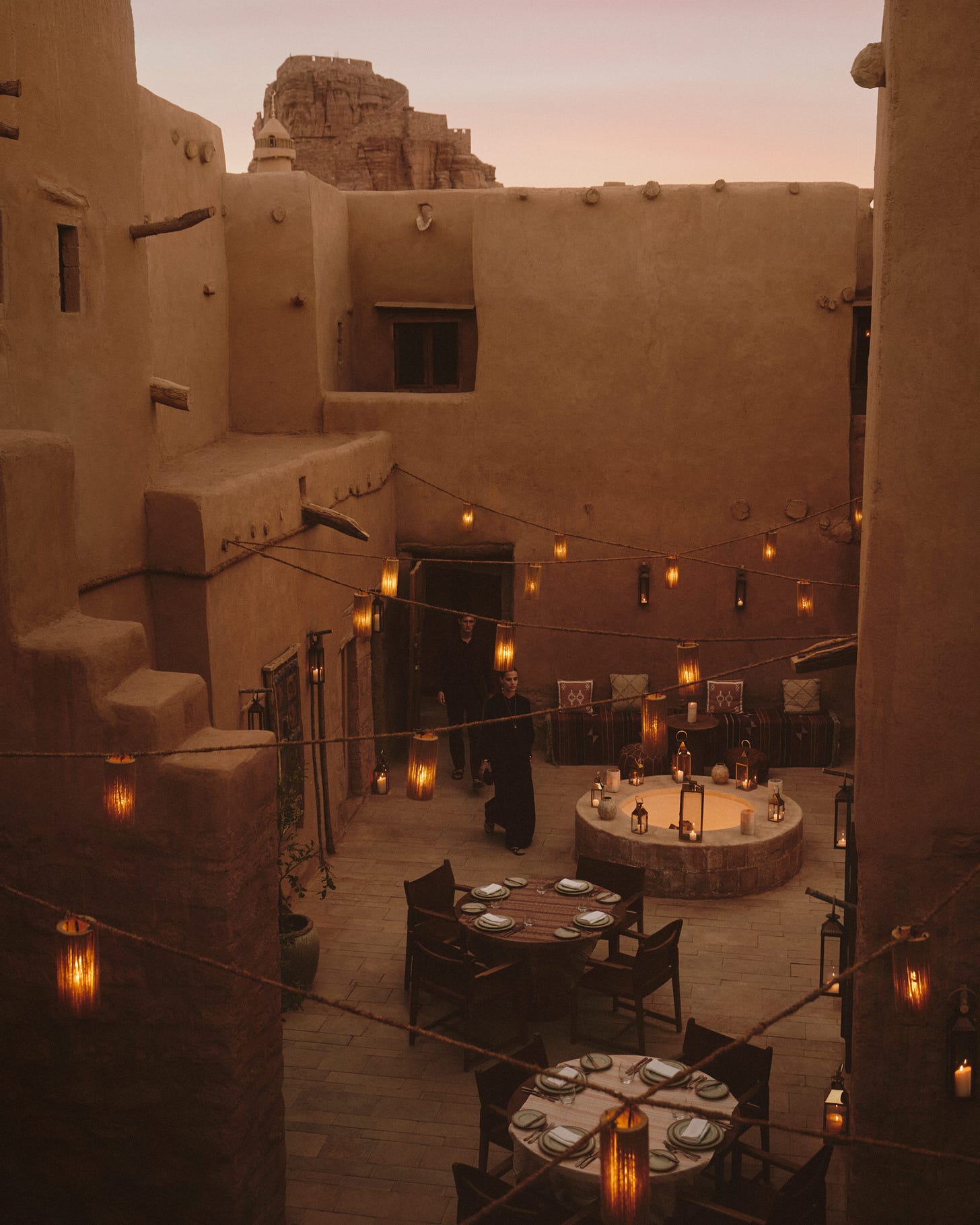
If Aman and Raffles reintroduce fire as a social anchor, others are using it to challenge our perception of hospitality. At Dar Tantora, The House Hotel in AlUla, Saudi Arabia, renowned Egyptian architect Shahira Fahmy created a hotel that is almost entirely candlelit. The thirty-building hotel has minimal electricity, while the rooms do have Wi-Fi, an outlet for charging your phone, a socket in the bathroom for shaving or a hairdryer, that’s it. Even the food for guests is cooked on wood fires. It’s a transportation back in time and the hotel is special for it. Through the complex, the walls are strung with lanterns and in the evening, fire is the only source of light in many of its spaces. It is a hotel where flames and shadows have entirely replaced modern illumination, yet it doesn't feel like it's missing anything.
When a room is lit only by fire, everything changes. The walls soften. The furniture feels closer. Everything feels more enclosed and intimate. Your senses are heightened and you might notice textures you would otherwise miss—the grain of wood, the irregular weave in a fabric or the indents and impressions of fingers and thumbs against the hand-made walls. Every hour, the atmosphere will shift and change as the day wakes and wanes, creating a hotel that is constantly in flux.
But fire isn’t confined to hotel lobbies or guest rooms—it’s dominating kitchens, too. Long before fine dining was measured in molecules, fire was at the centre of every meal.
Niklas Ekstedt knew this when he opened his self named Stockholm restaurant in 2011. He rejected the sterility of modern kitchens and brought flames back into the dining room, using open fires to cook every dish. His kitchen became a stage where diners watched in awe as smoke curled and the hiss of fat meeting fire rang out like applause. He has another Ekstedt in London Ekstedt at the Yard at the Great Scotland Yard Hotel an Unbound Collection hotel by Hyatt. It, like its big brother, is a triumph in fire.
Now, restaurants like HUMO in London and 11 Woodfire in Dubai have adopted the same philosophy as Niklas. At HUMO, every ingredient meets the flame in some form—grilled, smoked, or charred—with the fire’s glow lighting the space like its heartbeat. Timing and instinct are everything in this kind of cooking and what makes it so compelling is the honesty. A dish cooked over a fire tastes different because the process itself is imperfect, and the Chefs taking on this primal challenge are embracing that imperfection, not masking it. They ask their diners to accept that it will always be different and might not always be perfect, and it's working.
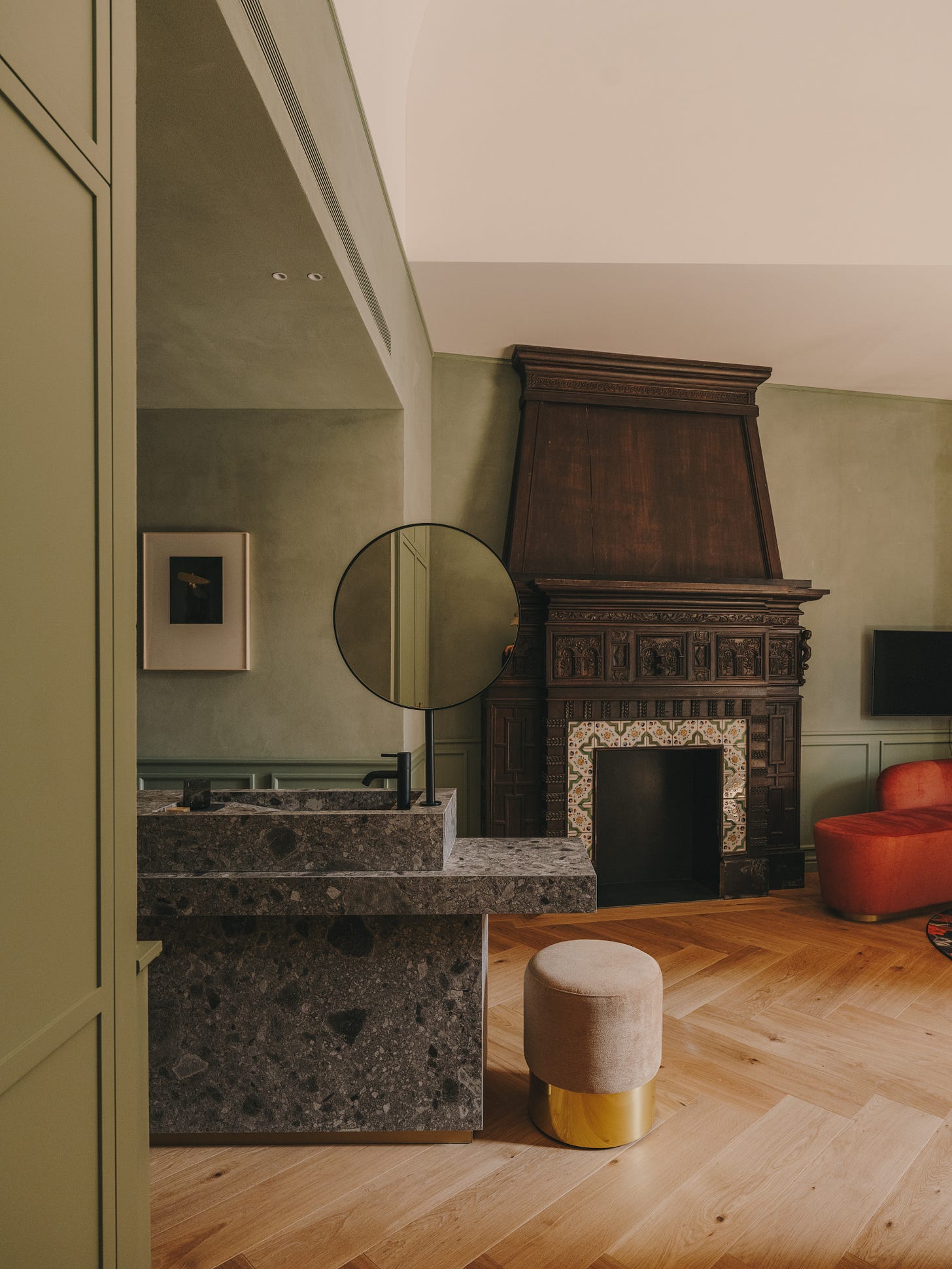
In all the various examples, fire does something no other design element can: it grabs our attention. At Palau Fugit in Girona, the fireplaces were designed by Catalan architect Rafael Masó. Like at the OWO, they are pieces of history. They connect the building to its 18th-century origins, highlighting Noucentisme ideals with regional craftsmanship. The flames tie the past and present together through heat and light. Allowing vastly different generations to gather and enjoy the very same expereince.
So why is fire coming back after years of absence?
Because we’re tired of perfection. Modern hospitality often errs on the side of control—light calibrated to the second or surfaces polished to the point of sterility. Fire is the antidote. It’s imperfect, unpredictable and alive.
A fire forces us to slow down. It holds our attention without demanding any thought, unlike a screen, song or even artwork. We can enjoy it without analysis or reason. It simply is, and in the flicker of its glow, hospitality finds its warmth again.






I have a fireplace in my home now and I love it. A great read! 🌹